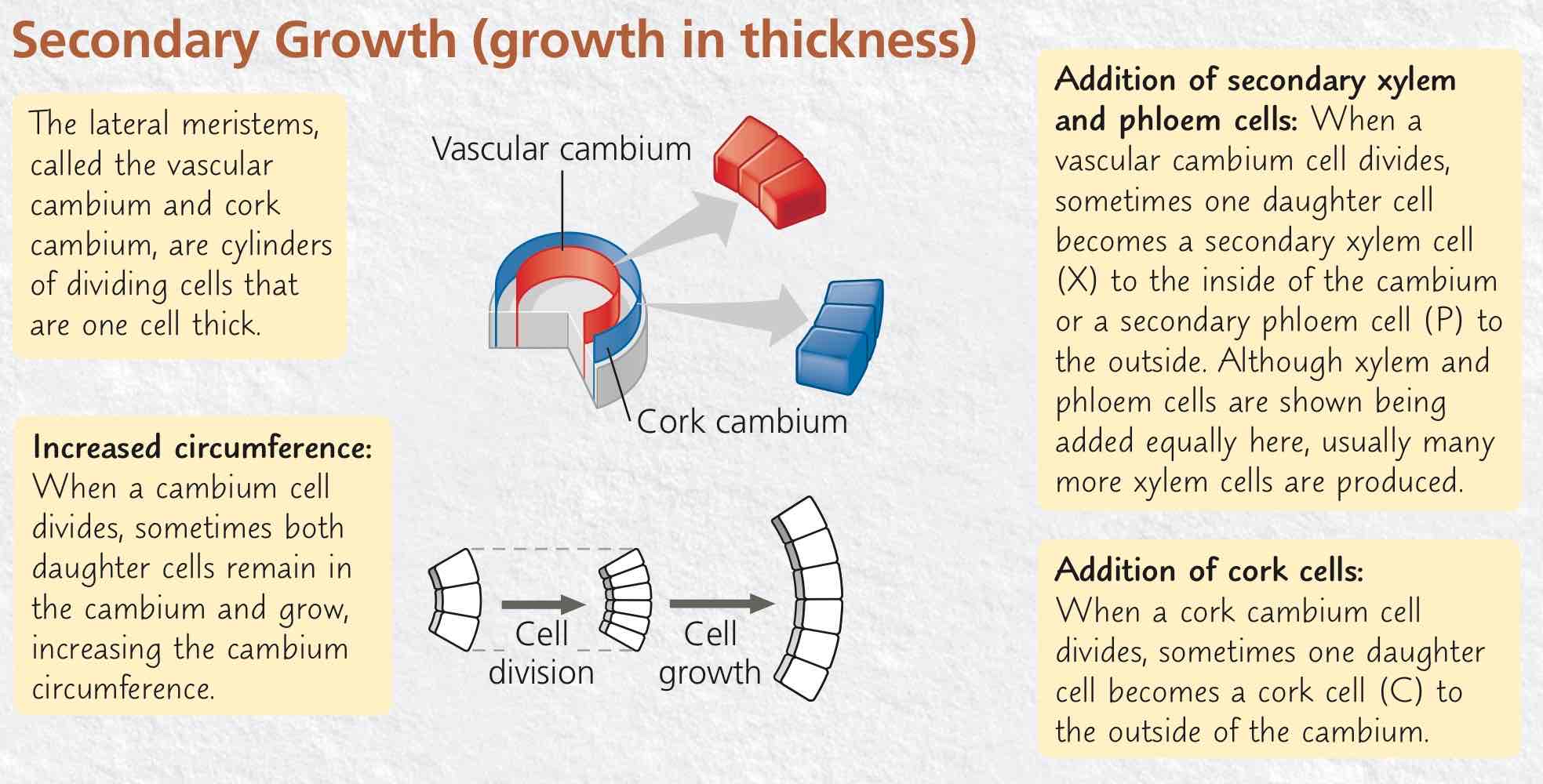BIOL 1030 / Topic 10b: Plant Tissues
1/44
There's no tags or description
Looks like no tags are added yet.
Name | Mastery | Learn | Test | Matching | Spaced |
|---|
No study sessions yet.
45 Terms
What are the three plant organs?
Roots, stem, and leaves.
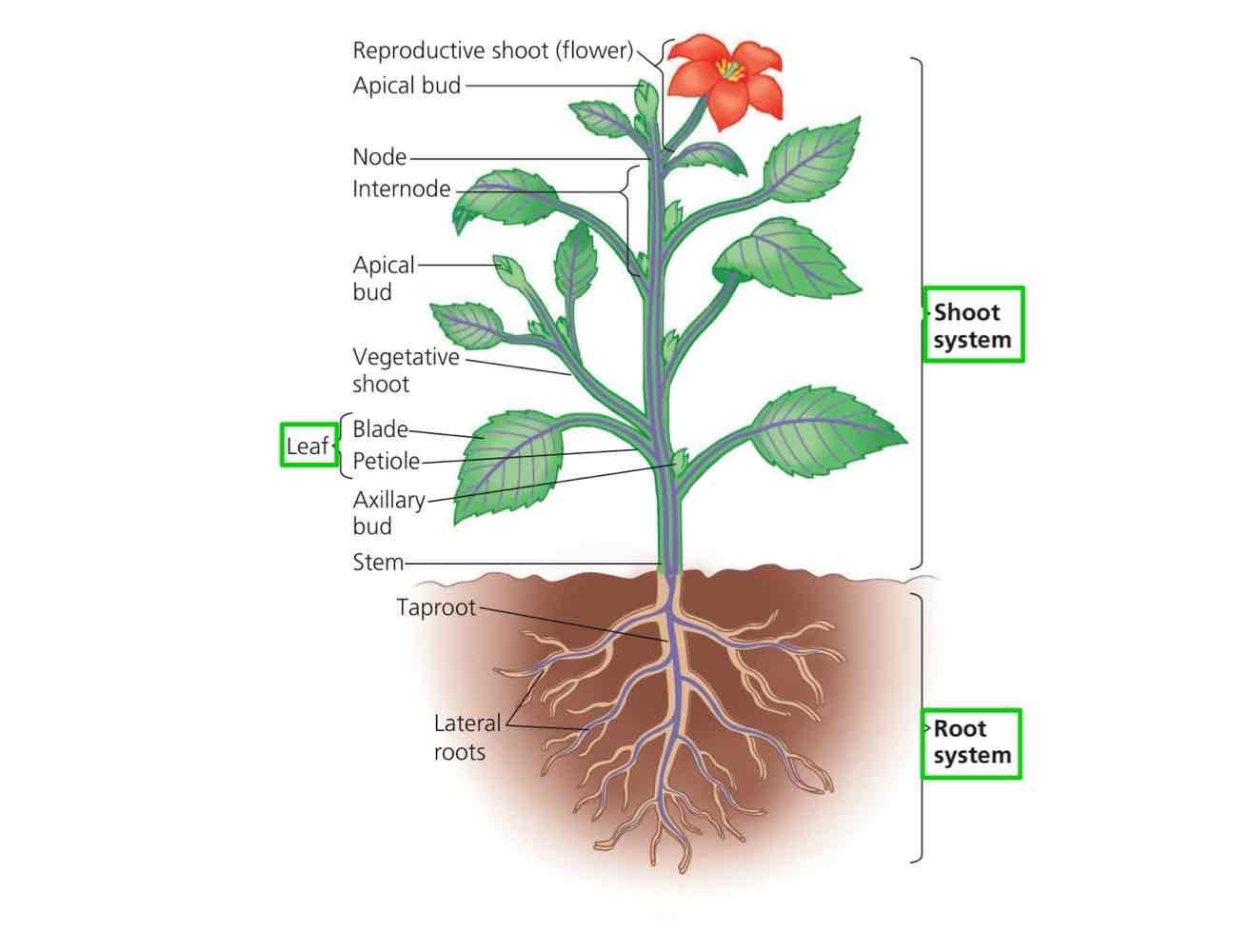
What are the three plant tissues?
Dermal, ground, and vascular.
Tissue system
A system of tissues connecting all of plant organs, each system being different in form and function.
Dermal tissue system
Tissue system acting as outer protective covering against physical damage and pathogens.
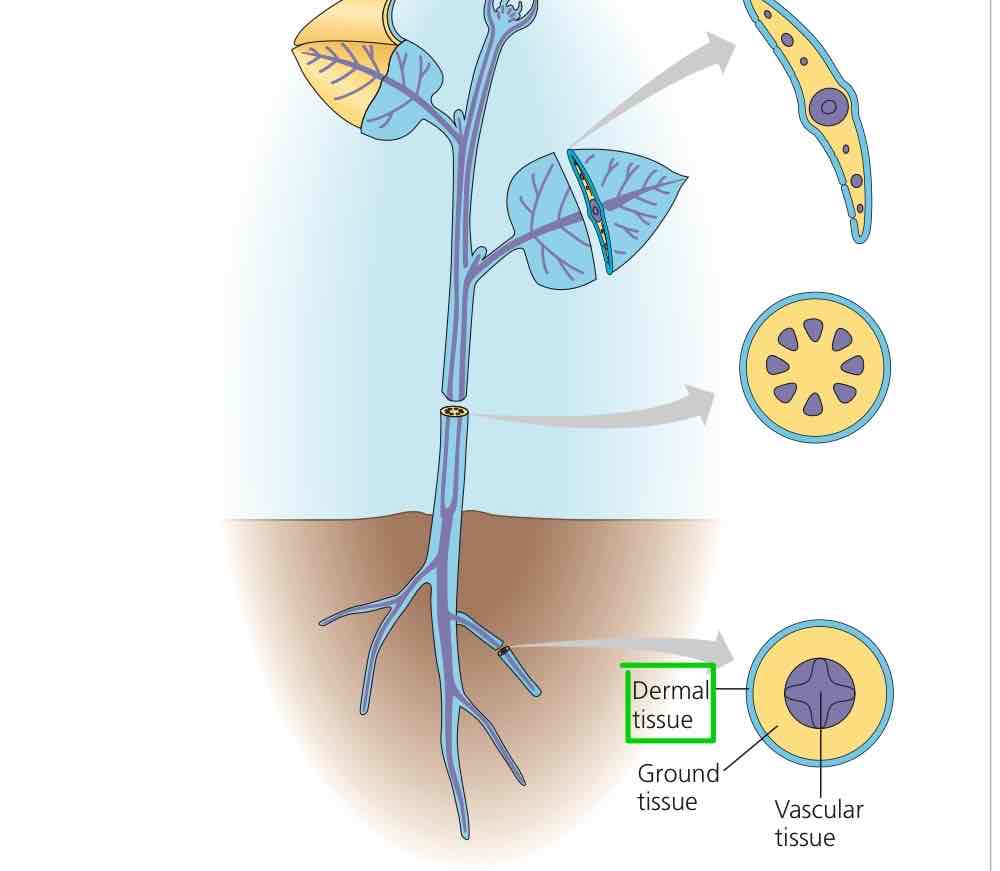
What is epidermis, and which plants can you find it on?
Layer of dermal tissue consisting of tightly packed cells in non-woody and very young parts of woody plants.
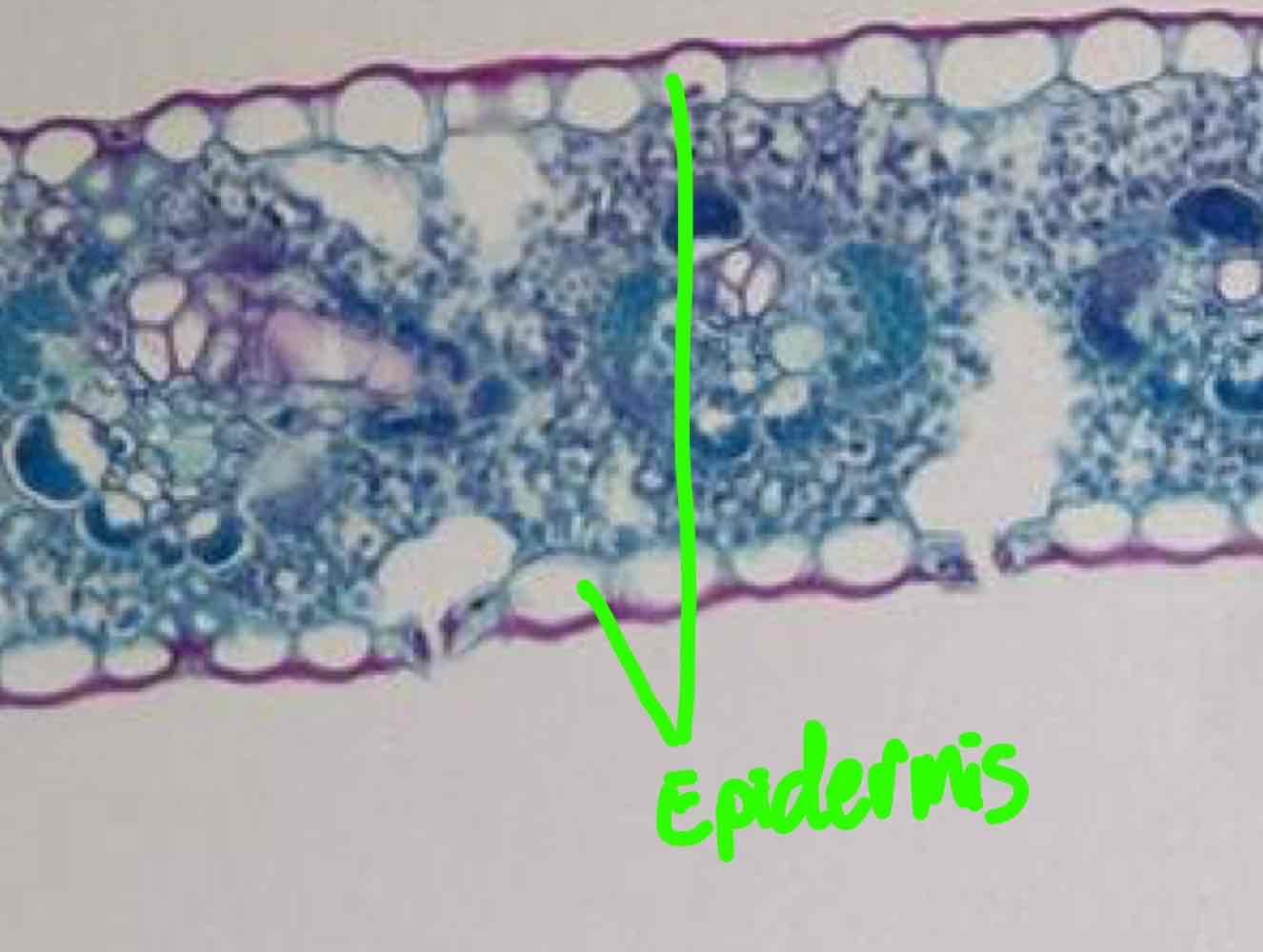
What is a cuticle, and which organs can you find it on?
Waxy coating on epidermis, helping prevent water loss, found in leaves and most stems.
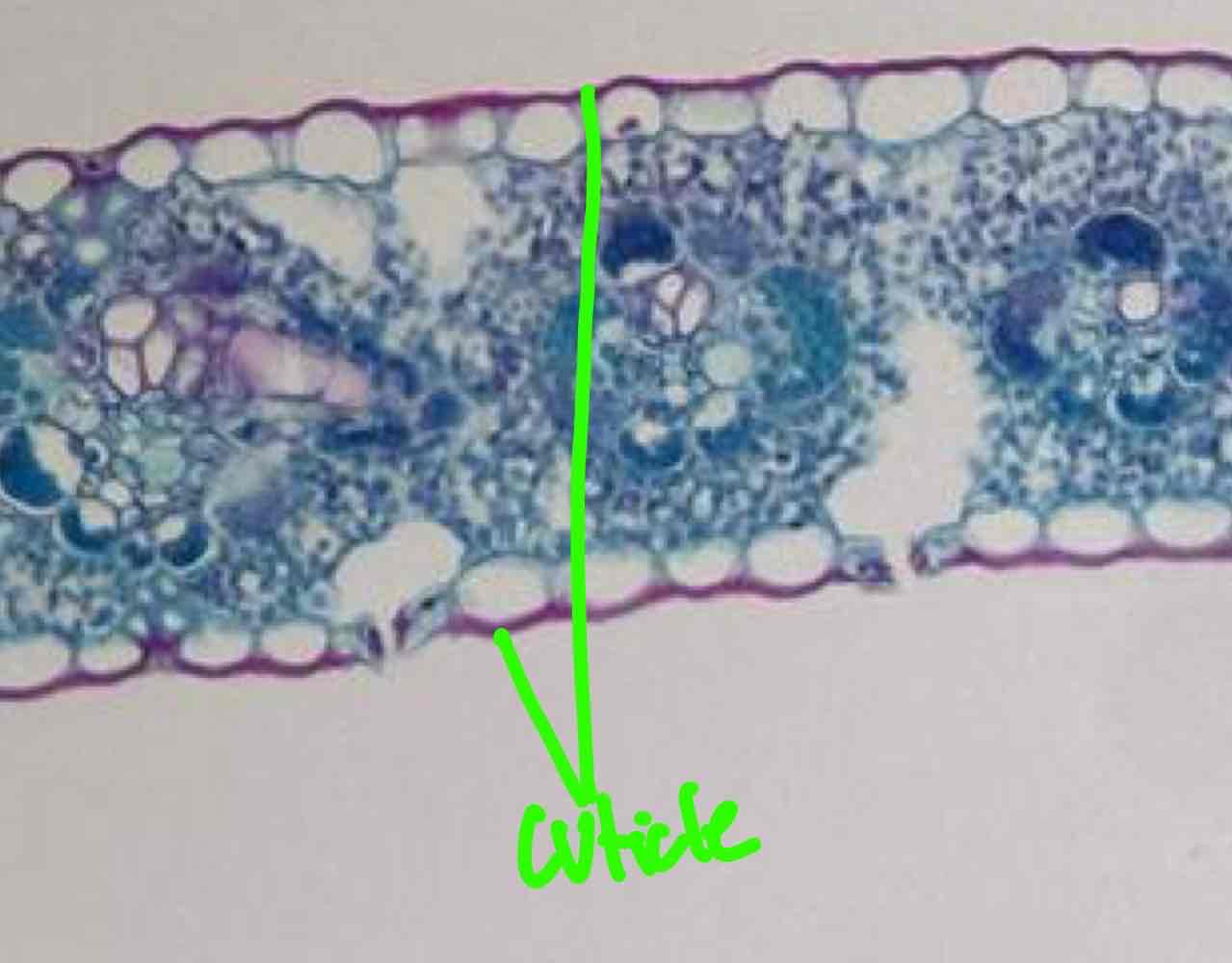
What is periderm, and where can you find it in what plants?
Tissue replacing the epidermis in older regions of stems and roots in woody plants.
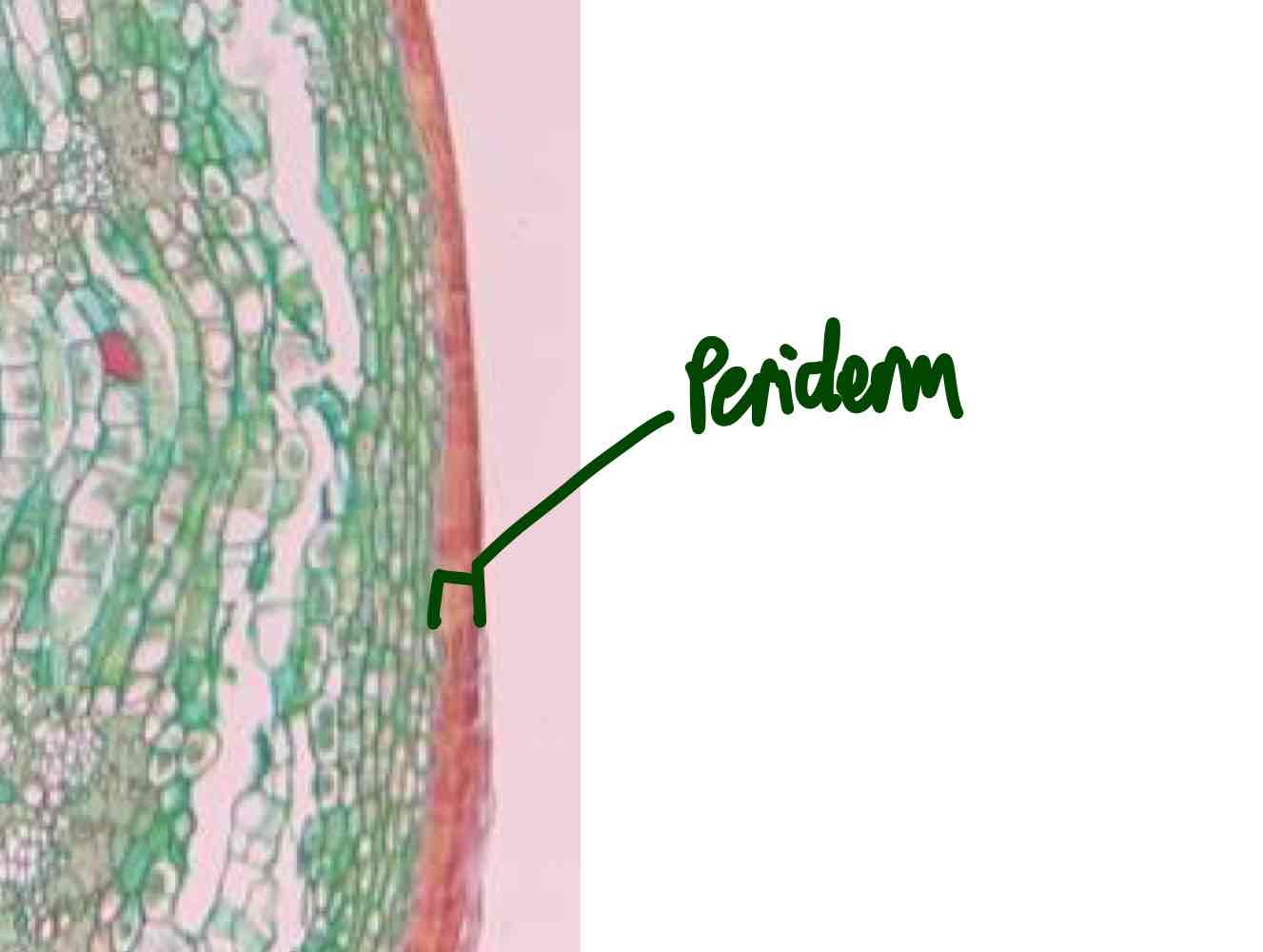
Other than protecting plant from water uptake and intake and damage and disease, the epidermis has specialized characters in each organ. In roots, what are the specialized characters of epidermis?
Waters and minerals absorbed from soil enter epidermis, especially in root hairs.
Transpiration
The process by which plants give off water vapour through stomata.
Other than protecting plant from water uptake and intake and damage and disease, the epidermis has specialized characters in each organ. In the shoot sytem, what are the specialized characters of epidermis?
There are two specialized epidermal cells:
Guard cells, found between stomata.
Trichome cells (trichomes) with multiple functions in regards to protection and sustinance.
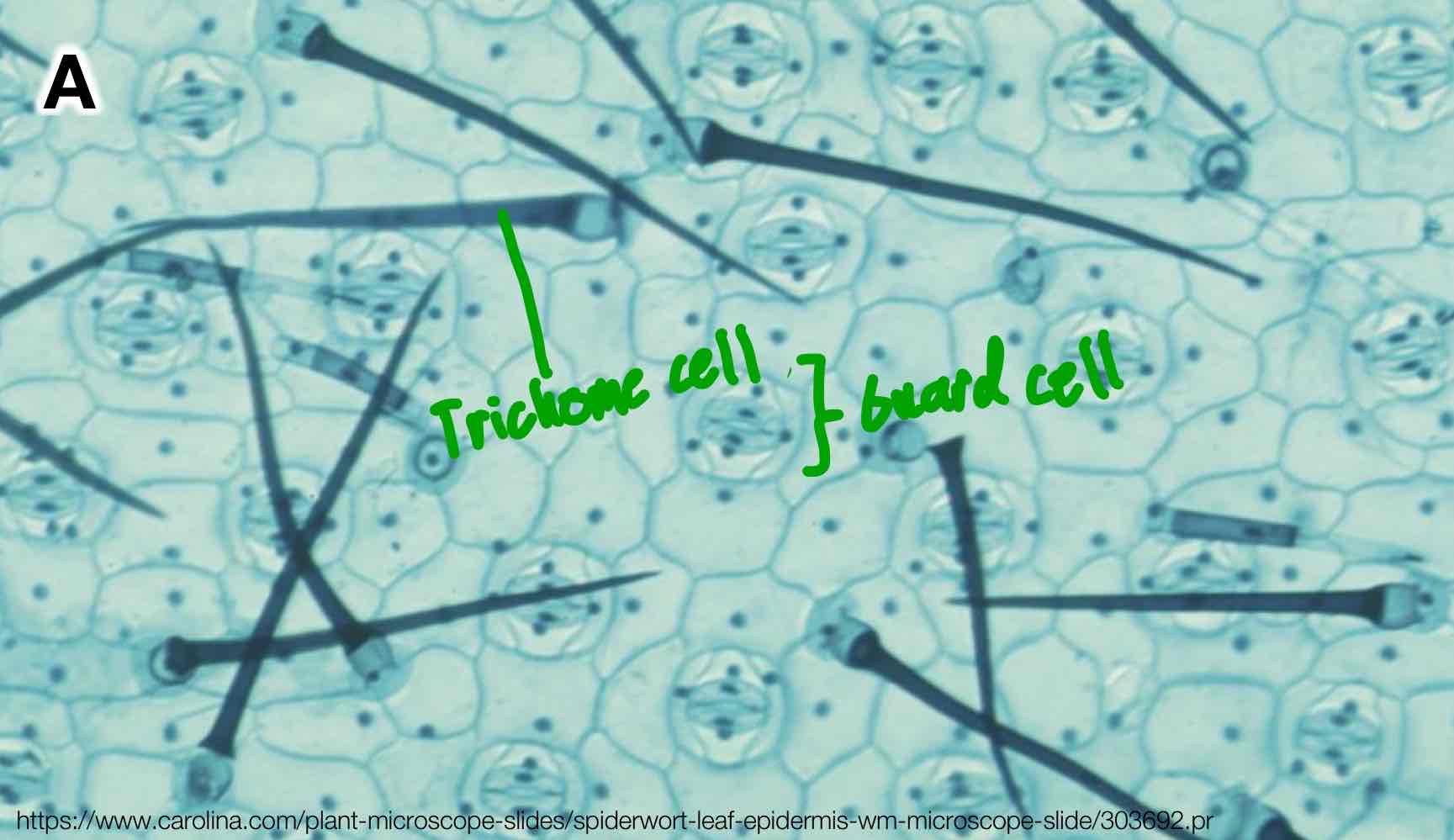
On which organs would you find trichomes?
All.
What are the multiple functions in regards to protection and sustinance that trichomes have?
Prevent water loss by slowing down transpiration by reducing air movement at leaf’s surface.
Preventing excess light by reflection.
Defending against insects through projections, e.g. cactus.
Defending against insects through secreted sticky or toxic fluid compounds, making the insect never wanting to return.
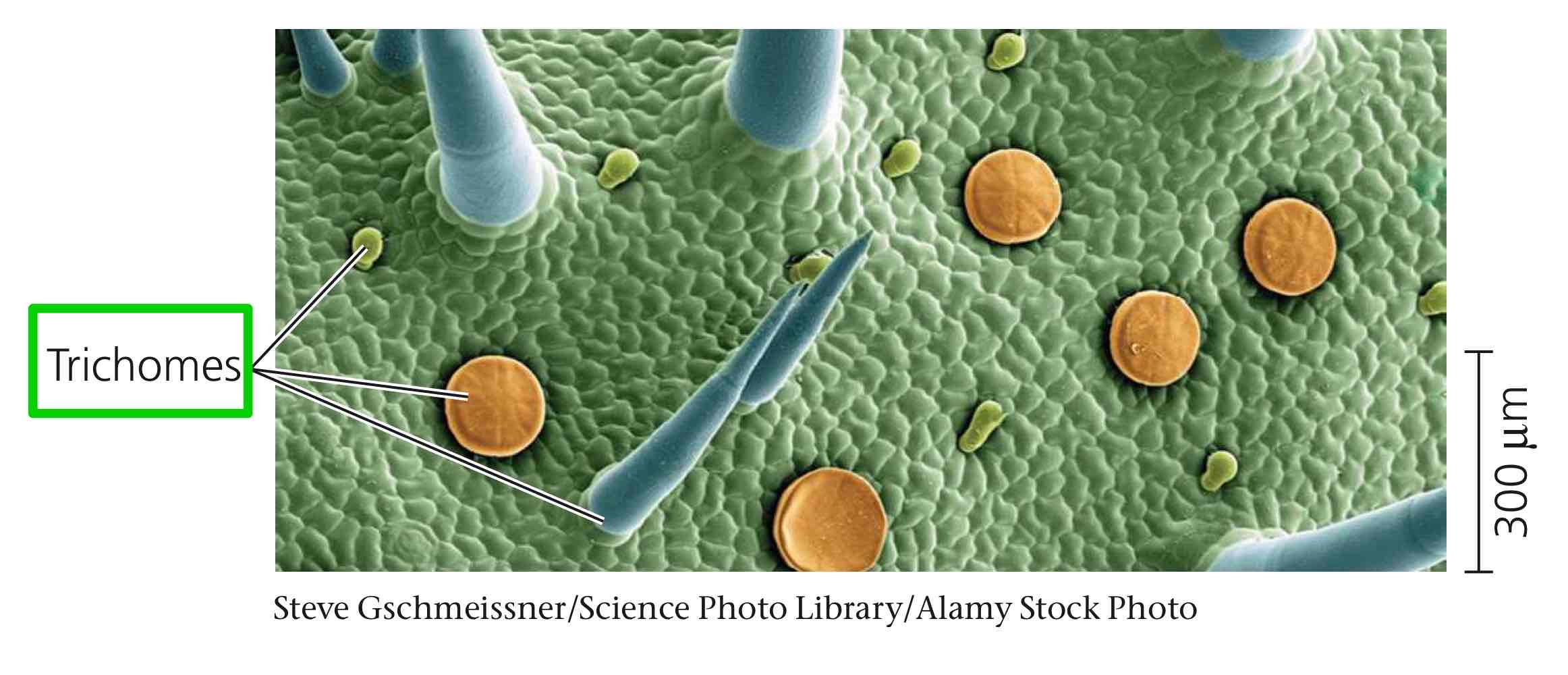
Vascular tissue system
Tissue system carrying out long-distance transport of materials between root and shoot systems and providing mechanical support.

What are the two types of vascular tissues?
Xylem and phloem.
What is xylem tissue? Are cells dead or alive at maturity?
Vascular tissue conducting water and dissolved minerals upward from root to shoot. Cells are not alive at functional maturity.
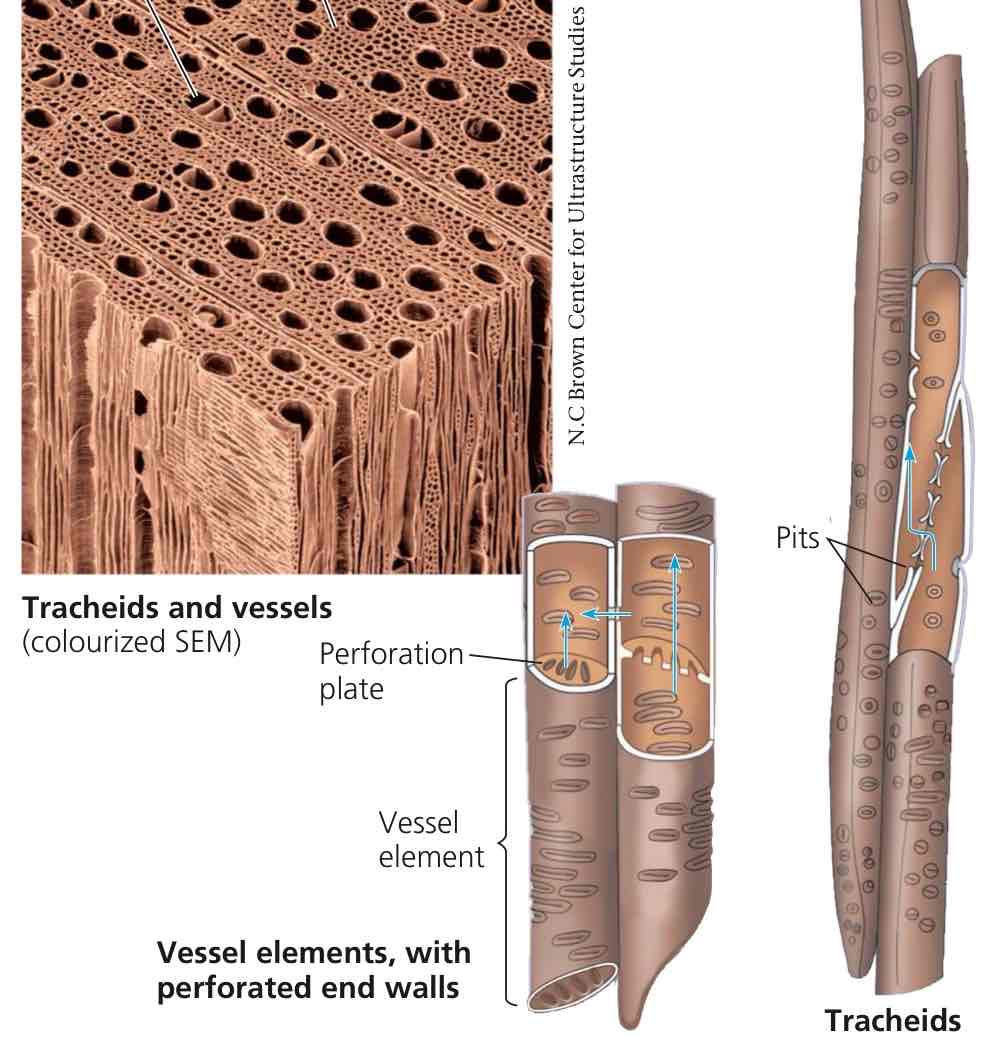
What is phloem tissue? Are cells dead or alive at maturity?
Vascular tissue transporting sugars from root to shoot and shoot to root. Cells are alive at functional maturity.
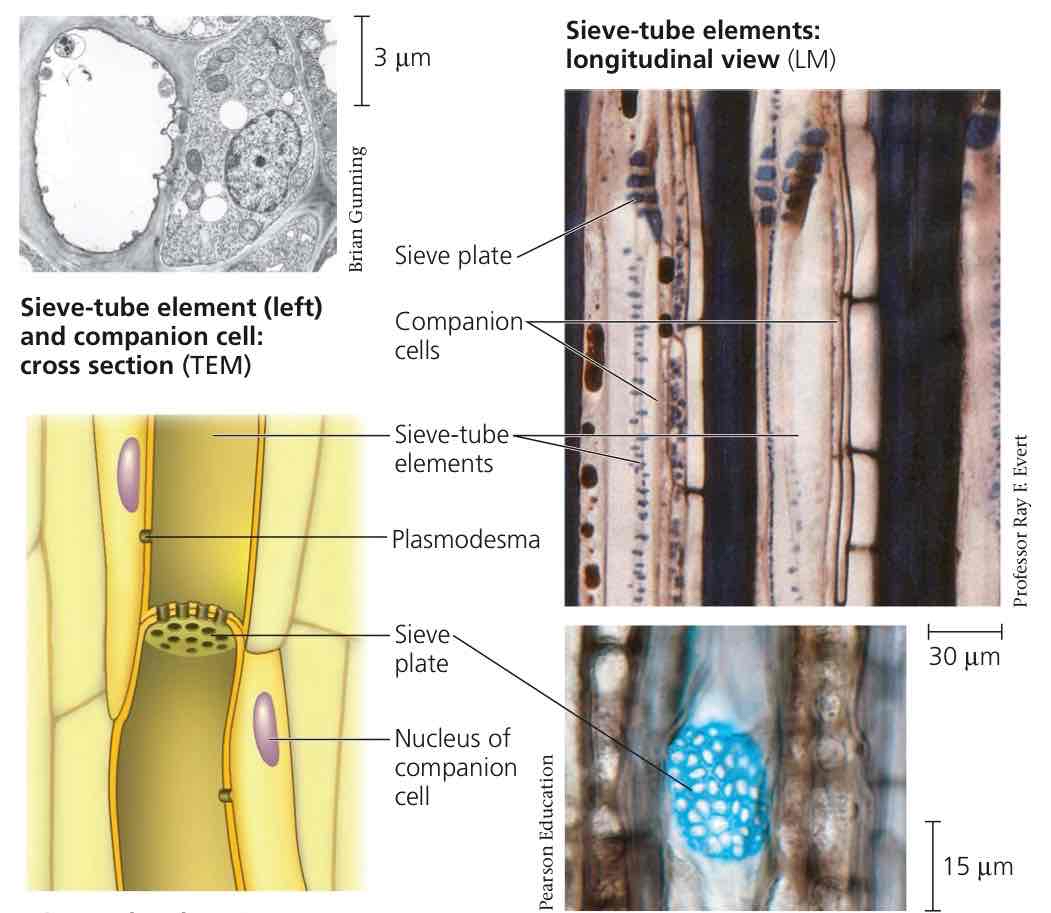
What are the two types of cells in xylem tissue? What’s the one thing that these two have in common? What’s their difference?
Tracheids and vessel elements. They are tubular, elongated cells that are dead maturity. Tracheids have a smaller diameter than vessel elements.
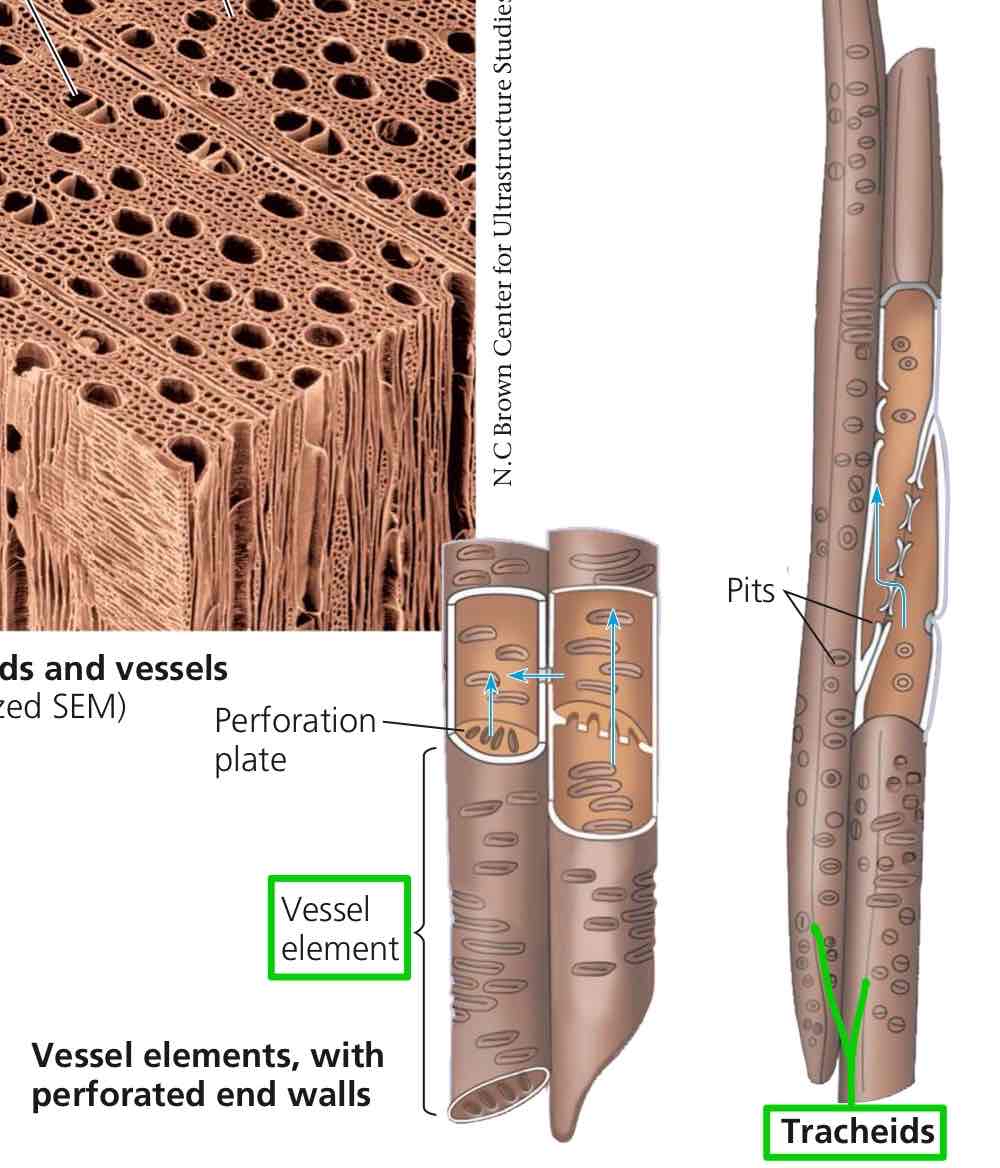
How do tracheids and vessel elements make the xylem a water-conducting tissue?
When the contents of a cell dies, the thickened secondary cell walls and apoplasts (components outside of cell membrane) remain behind, forming a nonliving conduit through which water can flow.
At which direction does xylem transport water and minerals?
Upwards.
Pits
Small openings in the secondary cell wall in xylem for transport of water and minerals between adjeacent cells.

If water were to move from cell-to-cell where does it cross, the cell wall or the pits?
The pits, because why would I want to go through a thick cell wall if I have an opening?
Sieve-tube elements
Chains of cells through which sugars are transported, lacking organelles and requiring assistance from companion cells.
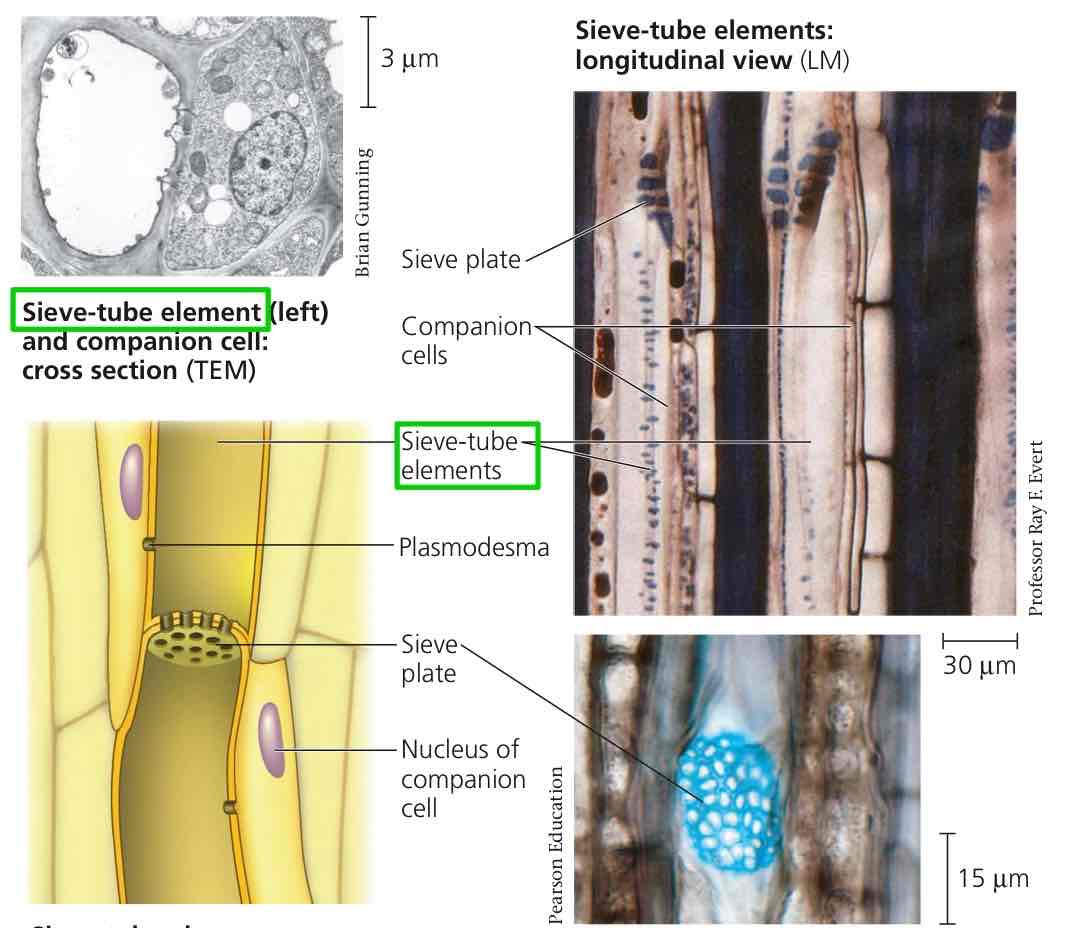
Companion cell
Supporting cells, fully intact and functional, connected to sieve-tube elements by plasmodesmata.
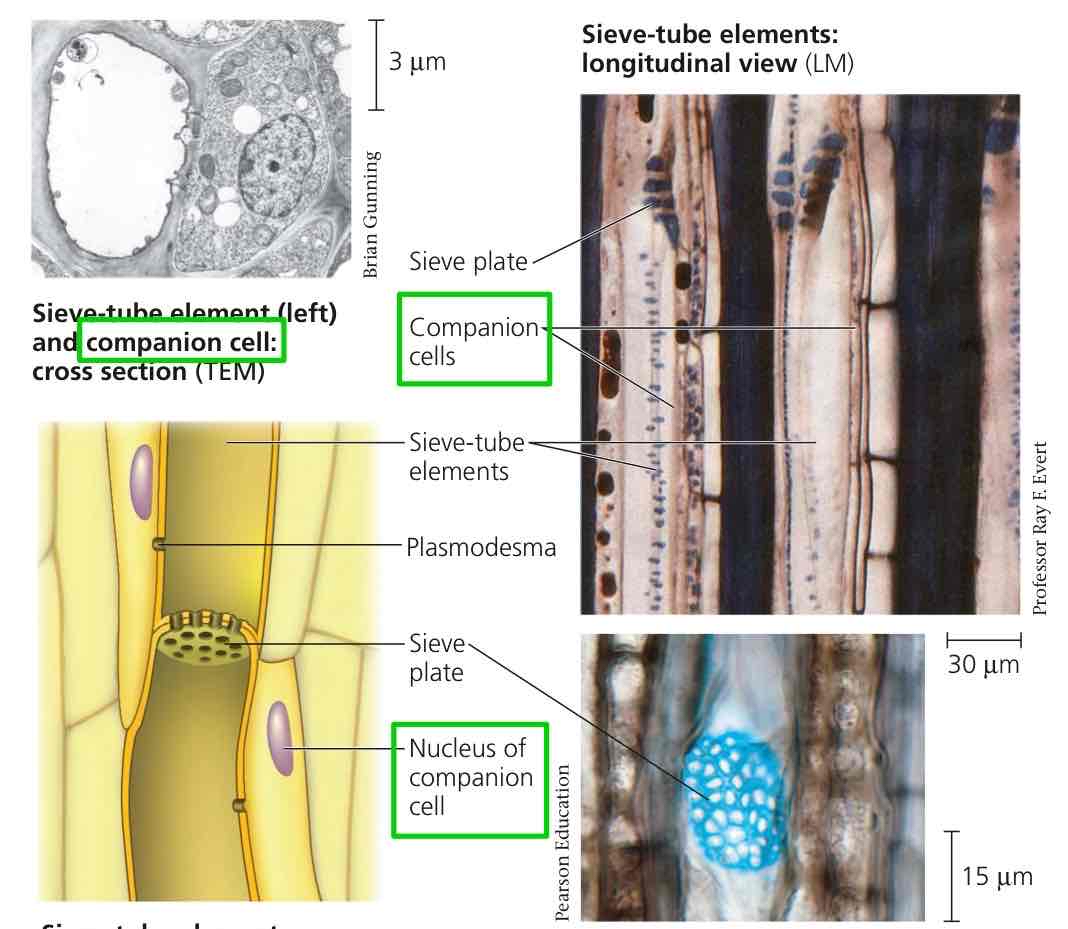
Sieve plates
Porous walls between sieve-tube elements aiding in traffic through sieve tube elements.
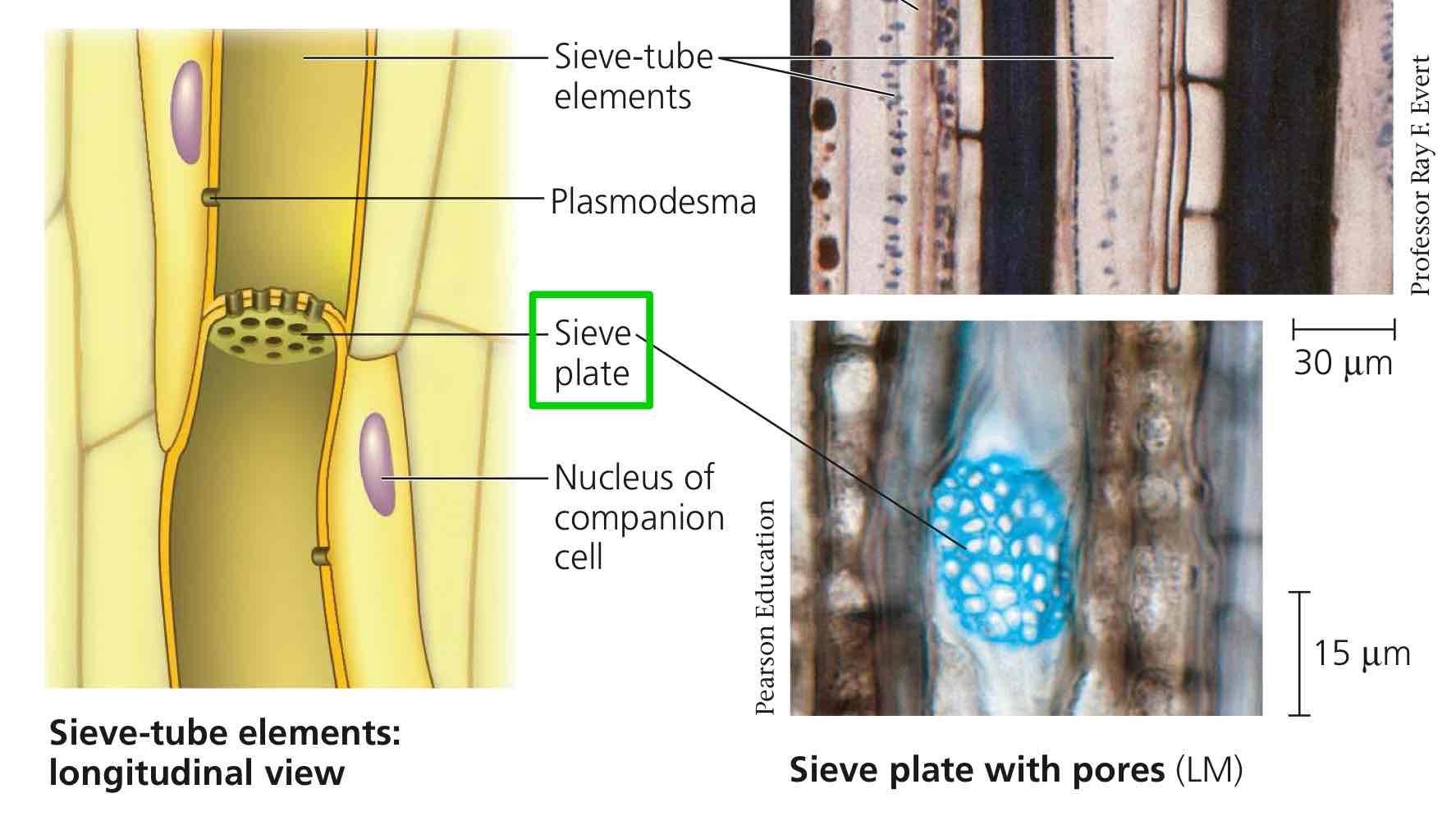
Stele
The vascular tissue of a root or stem.
Vascular cylinder
Stele arrangement for roots.
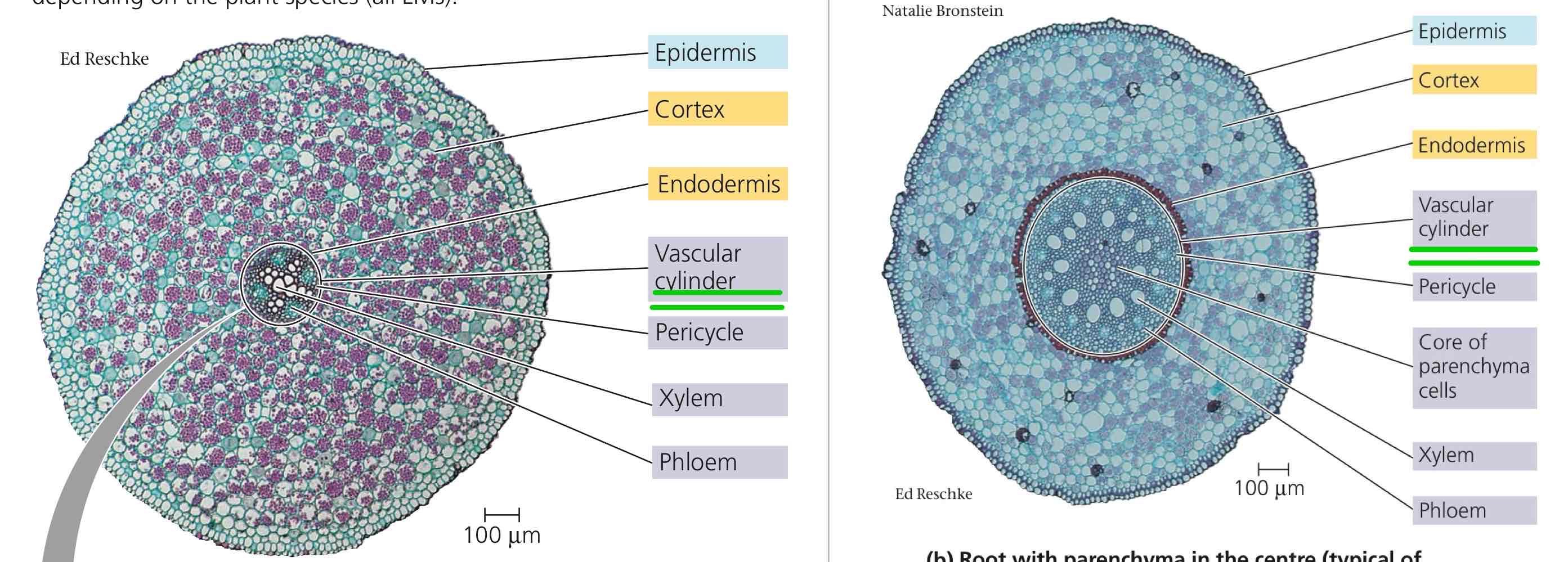
Vascular bundles
Stele arrangement for stems and leaves.
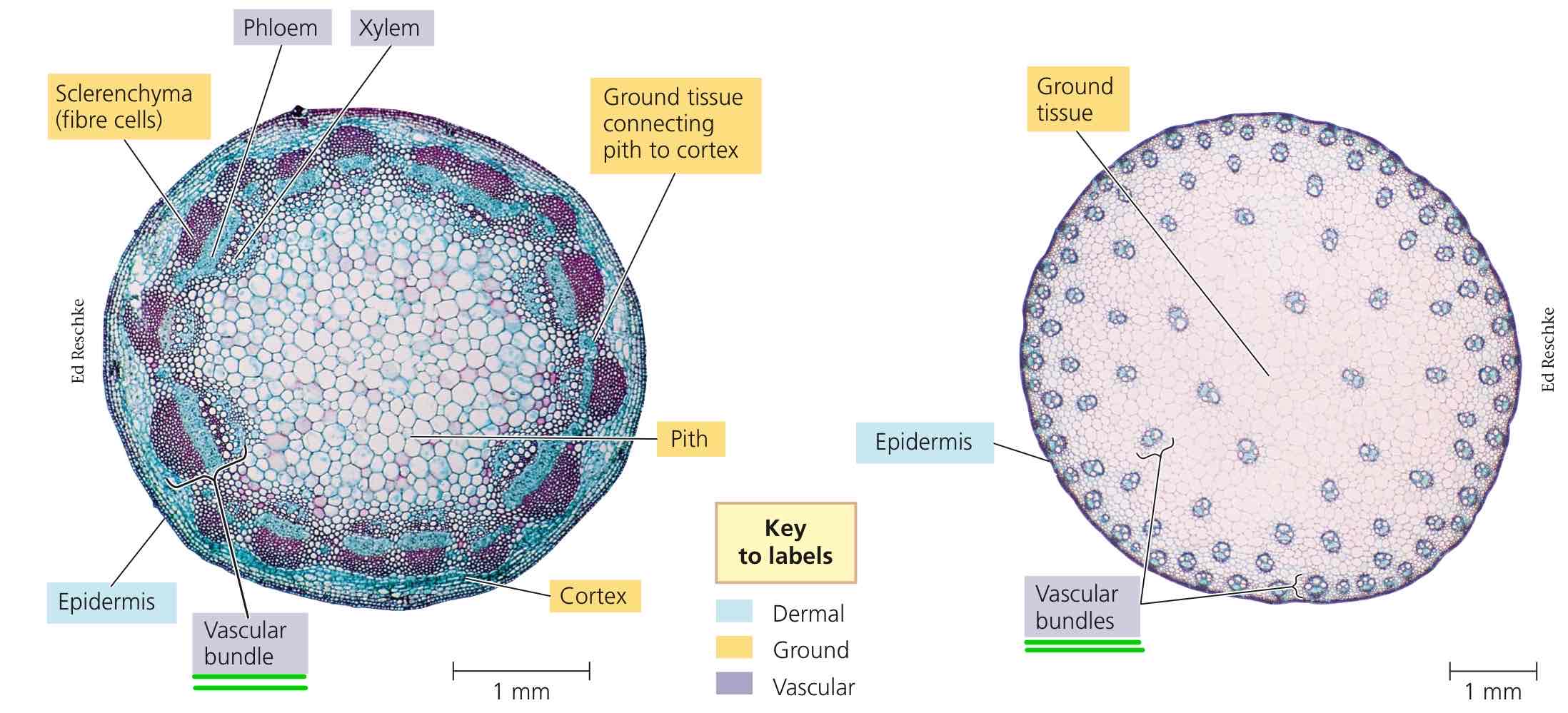
Ground tissue system
Tissue system consisting of tissues neither dermal or vascular, composed of specialized cells for storage, photosynthesis, and support.
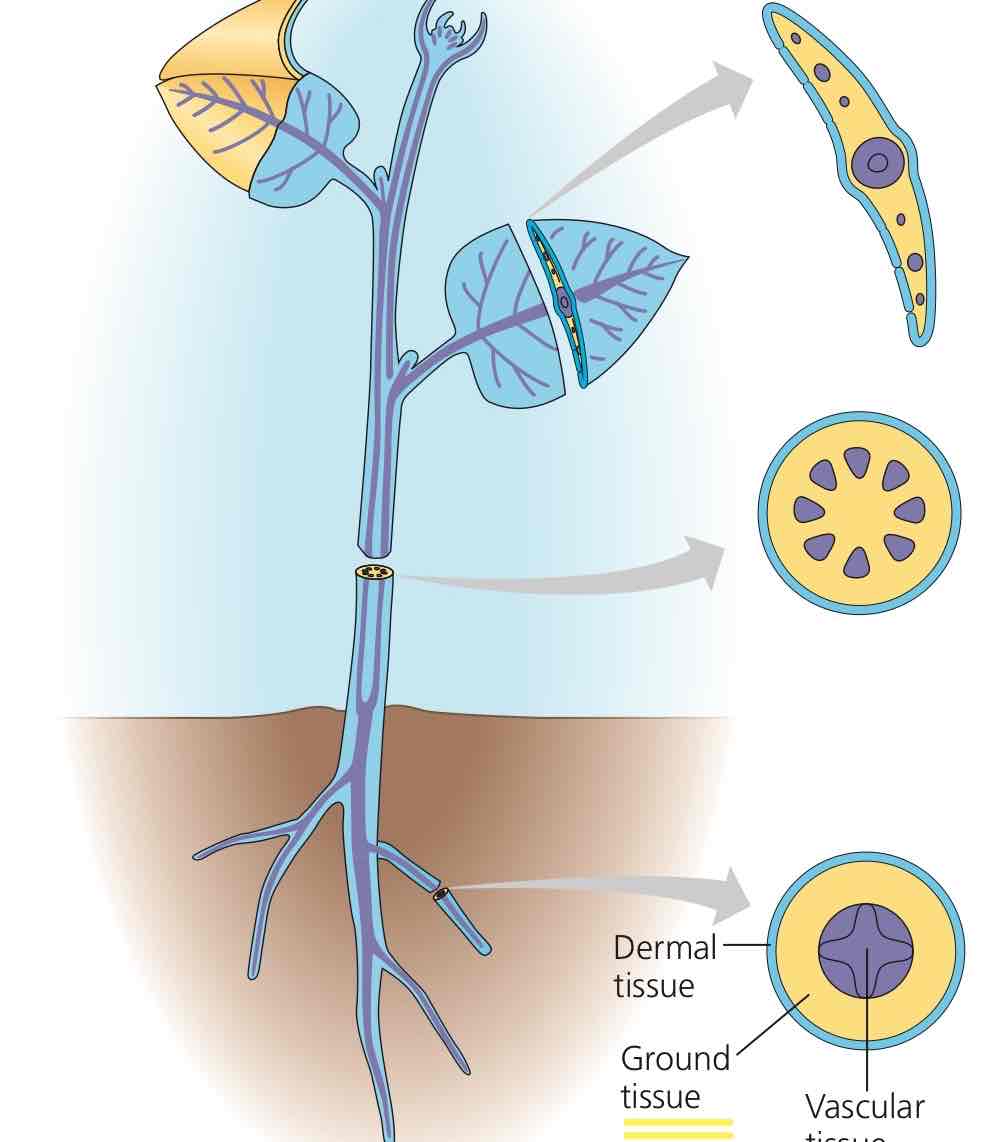
Pith
Ground tissue internal to the vascular tissue.
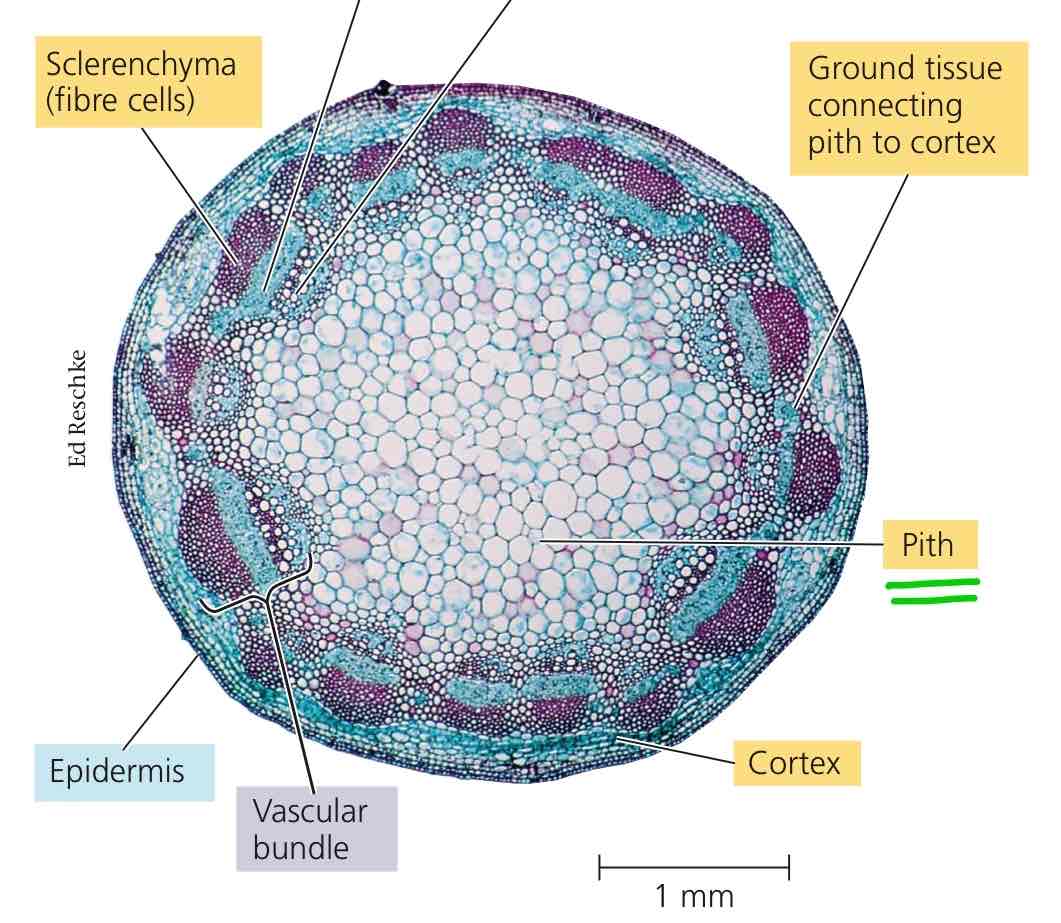
Cortex
Ground tissue external to vascular tissue.
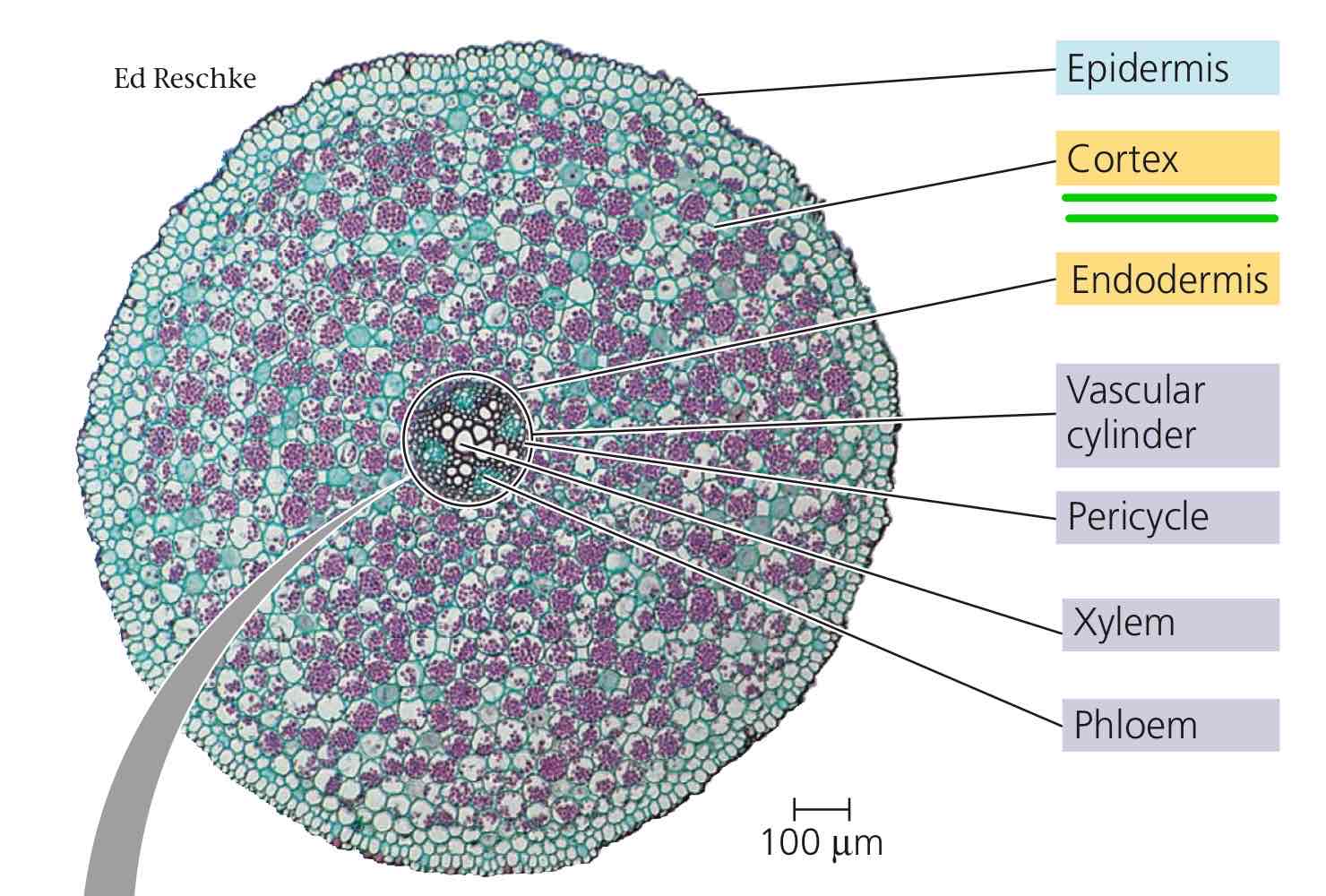
What are the three specialized cells of ground tissue?
Parenchyma, collenchyma, and sclerenchyma.
What’s the structure of parenchyma cells?
Ground tissue cells charactered by thin and flexible primary walls and general lack of secondary walls, containing a large central vacuole.
Parenchyma tissues have several functions depending on their location. What do parenchyma of leaves function as?
Parenchyma of leaves function as primary site of photosynthesis, i.e. the cells of tissue mesophyll.
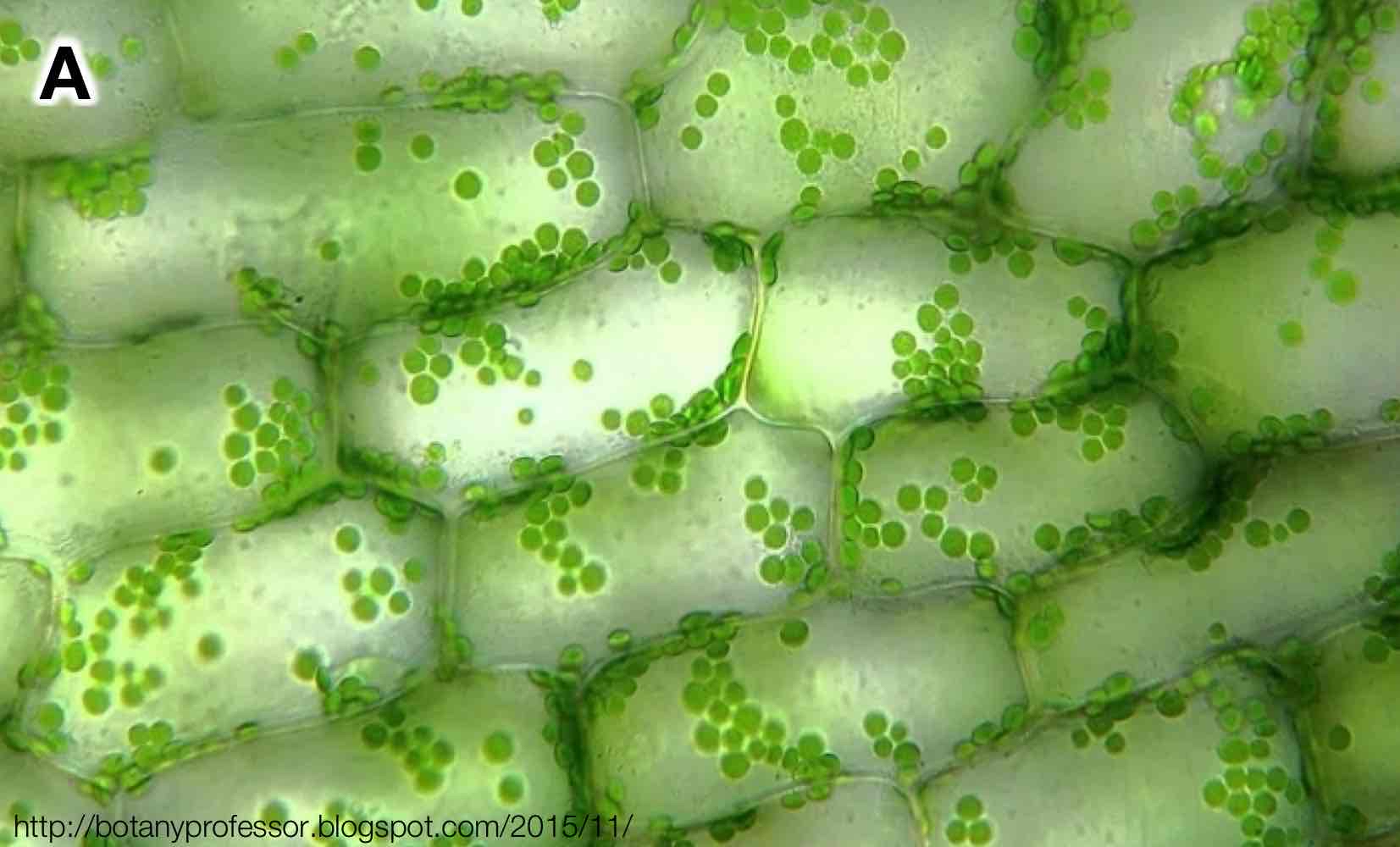
Parenchyma tissues have several functions depending on their location. What do parenchyma of roots function as?
Parenchyma of leaves function as storage site for starch.

What are the three special abilities that parenchyma have?
The ability to dedifferentiate and return to meristem cells, resuming cell division and creating new tissue.
The ability to differentiate into other types of plant cells under particular conditions, like wound repair.
The ability to grow an entire plant from a single cell.
What’s the structure of collenchyma cells?
Ground tissue cells that are clustered, elongated with irregularly thickened primary cell walls, and flexible with no lignin.
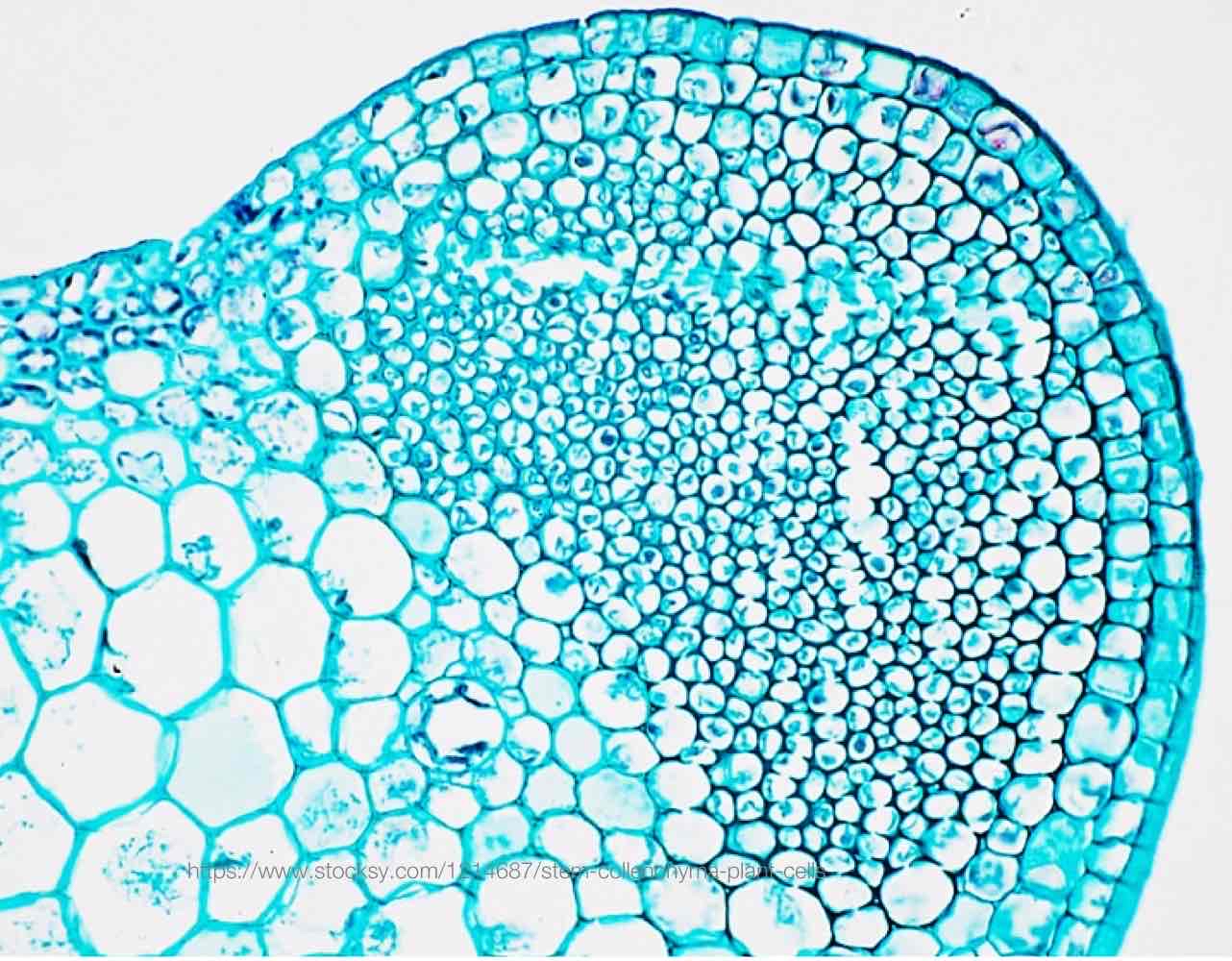
What’s the function of collenchyma cells?
Providing flexible support without restraining growth for young stems and petioles.
What’s the structure of sclerenchyma cells?
Ground tissue cells with multiple layers of a secondary cell wall, typically with lignin.
What’s the function of sclerenchyma cells?
Increases strength and rigidity of tissues.
Are sclerenchyma cells dead or alive?
Both! They can be alive, but they can also die because of so much lignin deposition.
What are the two types of sclerenchyma cells?
Sclereids and fibres.

What’s the structure and function of sclereids?
Small and irregularly shaped, strengthening organs that contain them.
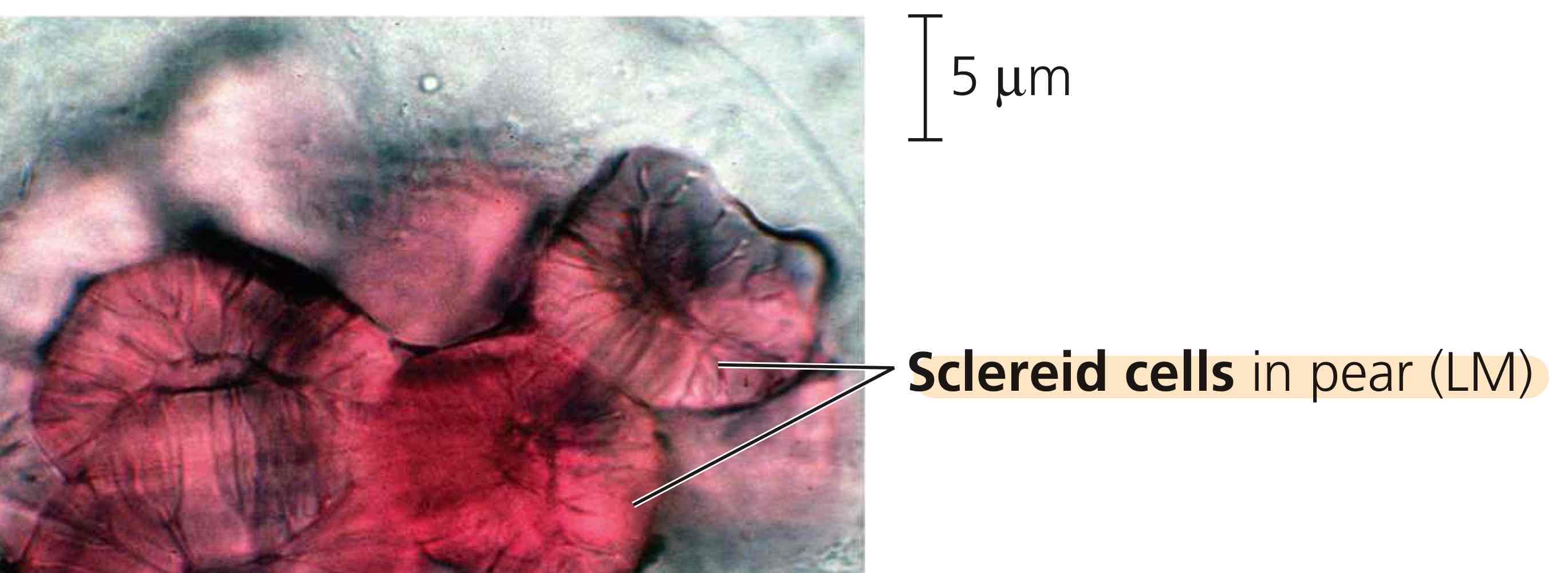
What’s the structure of fibres?
Long, supporting growing plant.
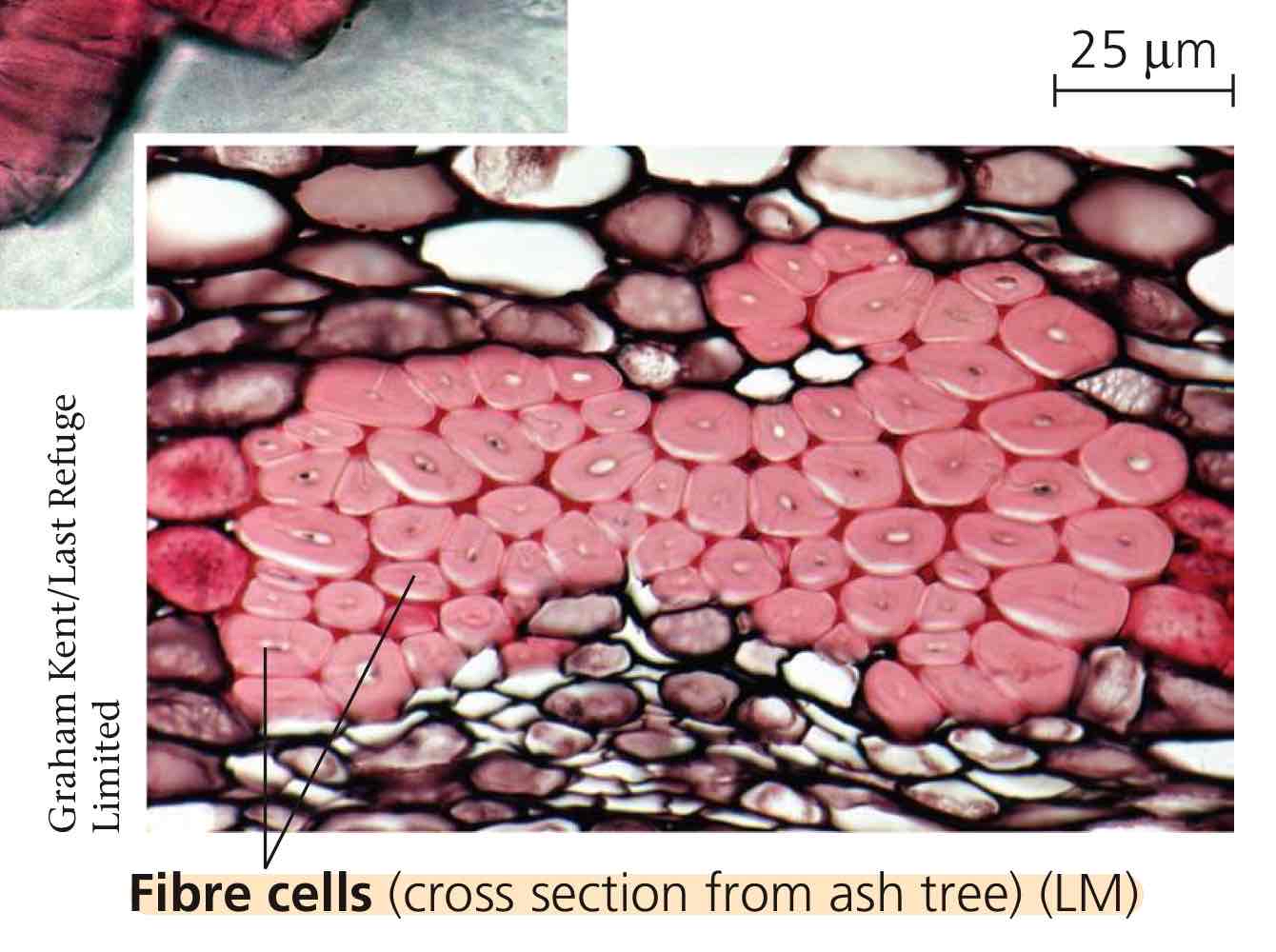
What is primary growth? Where in the plant is this done?
Growth in length, done by apical meristems at tips of shoots and roots.
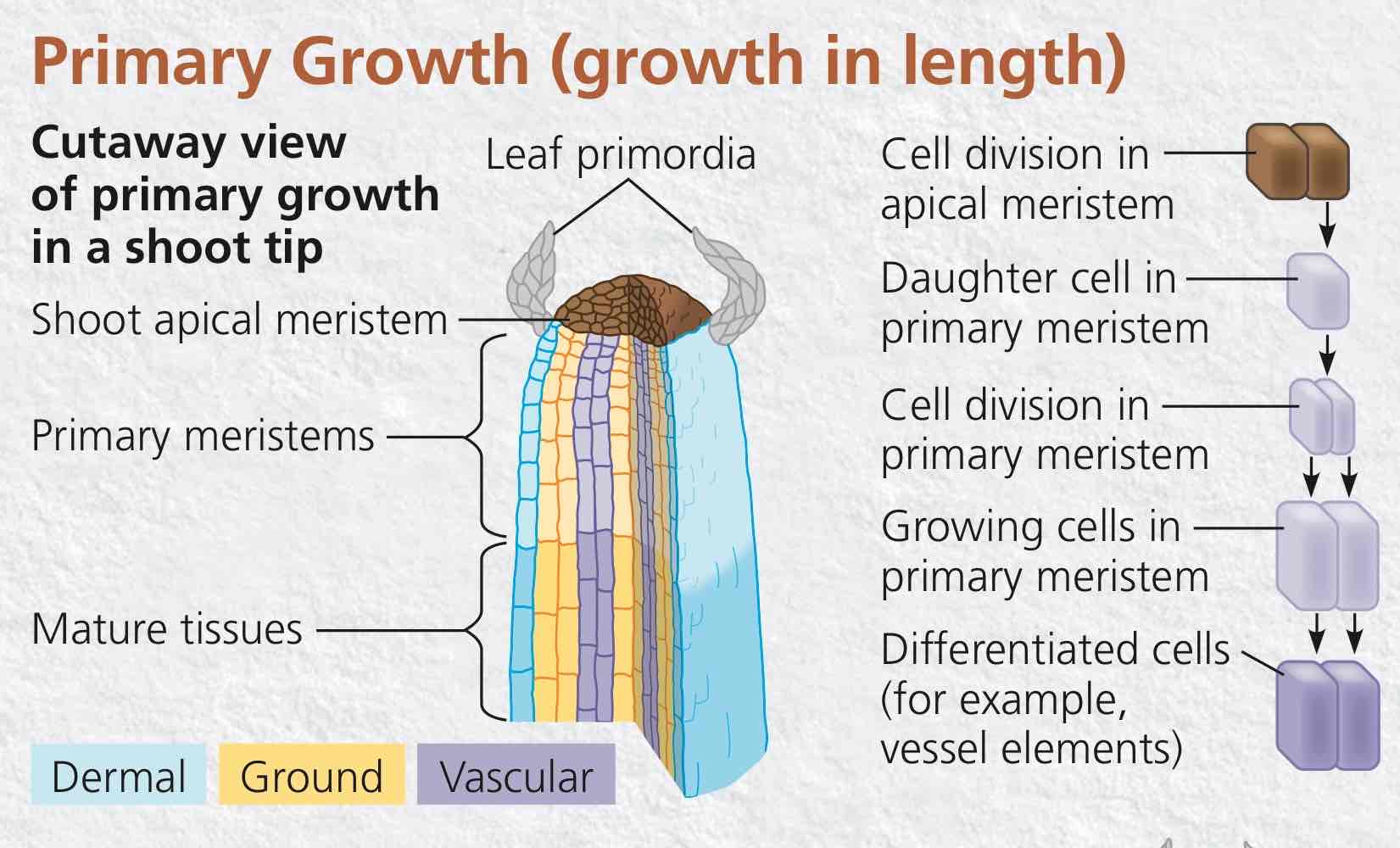
What is secondary growth? Where in the plant does this occur?
Growth in thickness, done by two lateral meristems extending along the length of a shoot or root where primary growth is done.
